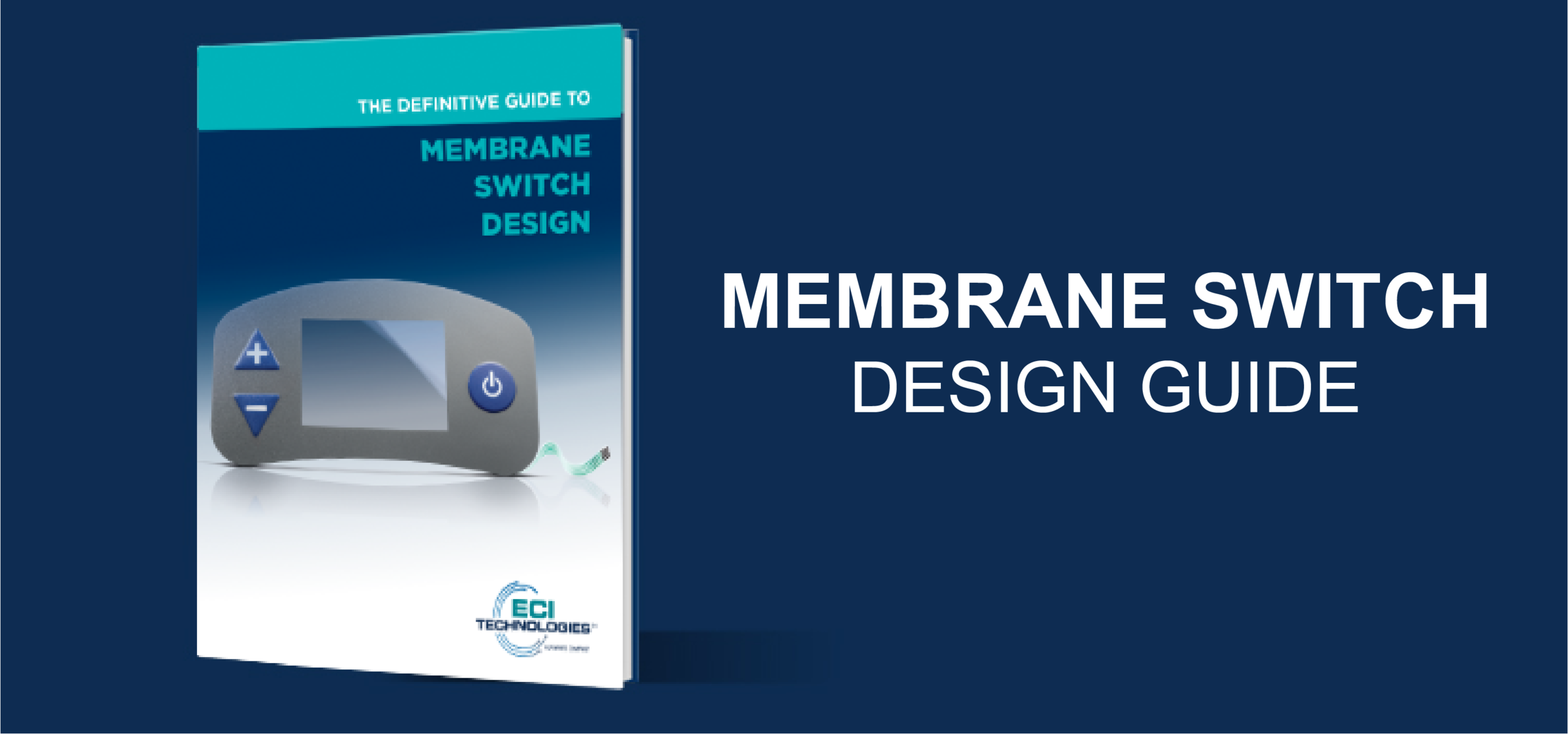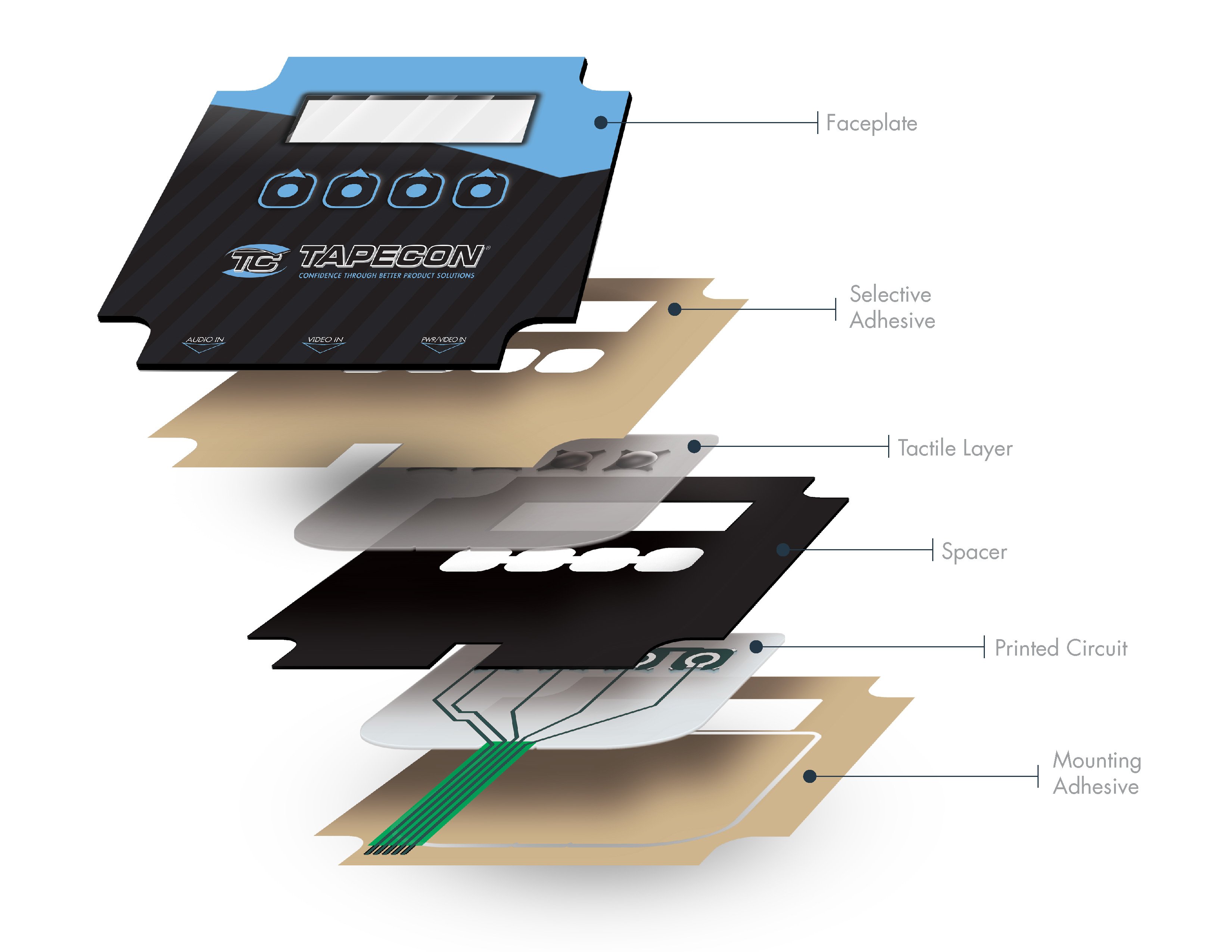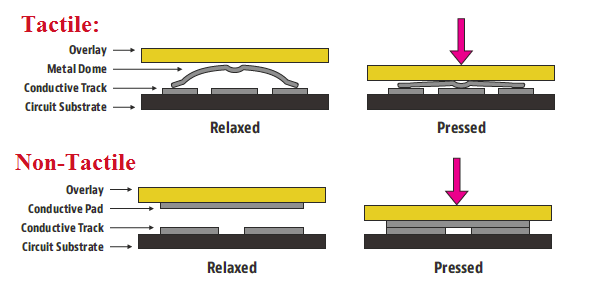A Comprehensive Guide to Membrane Switches for Product Designers
A Comprehensive Guide to Membrane Switches for Product Designers
Blog Article
Understanding the Relevance of Membrane Switches in Interface
Membrane switches are essential elements in the style of efficient user interfaces, assisting in not only capability however also boosting aesthetic allure and user communication. As we discover the different advantages and future patterns associated with Membrane innovation, it comes to be clear that these switches are extra than just elements; they stand for a merging of advancement and usefulness.
What Are Membrane Buttons?

The spacer layer, which includes adhesive properties, allows for the separation of the circuit layer from the overlay, ensuring that the switch stays in a non-activated state until pushed. When pressure is put on the overlay, it presses the spacer layer, connecting the gap and finishing the circuit in the underlying layer. This style not just lowers the physical area required for typical mechanical buttons but additionally improves the sturdiness of the device, as Membrane switches are usually immune to dust, dampness, and other ecological aspects.
Typically found in applications varying from consumer electronic devices to clinical tools, Membrane buttons are integral to modern-day technology, giving a easy to use and efficient user interface that aligns with contemporary layout demands.
Benefits of Membrane Buttons
While many switch modern technologies exist, Membrane Switches deal distinct benefits that make them particularly preferable in numerous applications. One of the main advantages of Membrane switches is their portable design, which permits space-saving implementations in gadgets where realty is restricted. Their slim profile not only improves aesthetic appeal however additionally assists in light-weight building.
One more substantial advantage is their resistance to environmental elements. Membrane switches are usually secured versus moisture, dust, and pollutants, making them suitable for usage sought after atmospheres, such as medical gadgets and commercial tools. This durability extends the life-span of the button, lowering upkeep prices and enhancing reliability.
Furthermore, Membrane switches can be personalized to satisfy details design requirements, incorporating unique graphics and colors that enhance user interaction. Their tactile feedback choices can additionally be customized to give an enjoyable customer experience. In addition, Membrane switches are affordable, especially in high-volume applications, as they can be created efficiently.
Applications in Different Industries

In the customer electronics field, Membrane buttons are common in gadgets such as microwaves, cleaning devices, and remotes. Their responsive feedback and visual options improve individual experience while providing a streamlined, contemporary appearance. Furthermore, automotive manufacturers make use of Membrane buttons in dashboard controls and infotainment systems, where room is limited, and customer engagement is essential.
Furthermore, the commercial industry blog leverages Membrane buttons in control panels for machinery and devices, permitting intuitive procedure in often extreme settings. Their resistance to chemicals and wetness makes certain longevity and dependability in these applications. Generally, the flexibility of Membrane Switches adds significantly to their widespread usage, making them essential go to my blog in numerous technological domains.
Layout Considerations for Membrane Switches

When developing Membrane switches, several crucial factors to consider need to be taken into consideration to make sure optimal performance and customer experience. The option of products is important; choosing resilient, premium substrates can enhance the button's long life and resistance to ecological elements such as moisture and temperature variations.
Second of all, the layout of the visuals overlay ought to prioritize clarity and ease of usage. Icons and message must be legible, and the layout needs to promote user-friendly interaction (membrane switches). In addition, responsive responses is important; including a tactile dome or various other mechanisms can enhance the customer experience by supplying physical confirmation of activation
Another vital aspect is the button's electric performance. Developers should ensure that the conductive traces are effectively created to reduce resistance and stay clear of signal interference. This involves examining the required actuation pressure and guaranteeing compatibility with the digital elements they will user interface with.

Future Trends in Membrane Modern Technology
As innovation proceeds to advancement, Membrane buttons are poised to progress significantly, driven by advancements in products and manufacturing methods. One arising trend is the consolidation of innovative materials, such as adaptable substrates and conductive inks, which enhance toughness and reduce the overall weight of Membrane switches. These products not only enhance the responsive feedback but likewise enable for the layout of buttons that can endure harsher environmental problems.
In addition, the integration of touch-sensitive technologies is transforming standard Membrane Switches into more interactive interface. Capacitive touch sensing units embedded within Membrane button panels can provide a more responsive and user-friendly individual experience, straightening with the expanding demand for streamlined, contemporary layouts in consumer electronic devices.
Furthermore, advancements in printing methods, such as electronic and 3D printing, allow rapid prototyping and customization of Membrane switches. This adaptability enables manufacturers to respond faster to market demands and consumer preferences.
Last but not least, sustainability is coming to be a substantial emphasis, with makers discovering green products and processes. As these patterns unfold, the future of Membrane innovation assures improved capability, visual allure, and environmental responsibility, strengthening their function in sophisticated interface across various markets.
Final Thought
In conclusion, Membrane Switches represent an essential part in the style of user interfaces, integrating performance with visual adaptability. Their benefits, including longevity and resistance to ecological variables, make them appropriate for diverse applications throughout different industries. Thoughtful layout factors to consider enhance user interaction and experience. As advancements in modern technology continue, the advancement of Membrane buttons is expected to more refine interface, driving development and boosting functionality in a significantly complicated technological landscape.
Membrane buttons are indispensable parts in the design of effective customer interfaces, facilitating not just functionality yet likewise enhancing visual appeal and individual communication.Membrane Switches offer as a crucial part in various user interfaces, promoting a smooth interaction between customers and anchor digital devices.While many button modern technologies exist, Membrane Switches deal distinctive benefits that make them specifically desirable in numerous applications.Moreover, Membrane switches can be personalized to fulfill certain layout demands, including one-of-a-kind graphics and shades that boost customer communication.In verdict, Membrane Switches stand for an important element in the design of individual interfaces, combining functionality with aesthetic flexibility.
Report this page